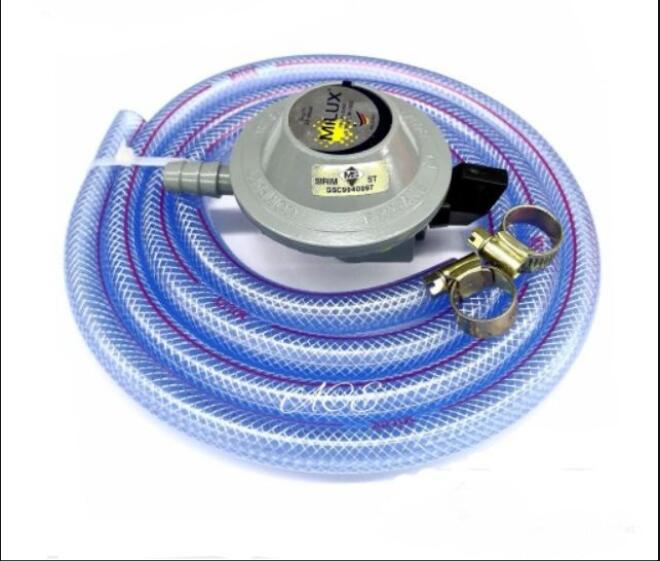Method steps for gas hose installation
1. Choose a hose with a moderate length and no more than 2m. The material should be NBR or 304 stainless steel corrugated pipe.
2. Determine the installation location. Generally, it should be installed in a well-ventilated kitchen. Do not stack flammable materials around, and the indoor height should not be less than 2.2m.

What are the hidden safety hazards of gas hoses
1. If the gas hose is used for a long time and is not replaced in time, it is prone to aging and cracking, which will cause the hose to leak. Under normal circumstances, the hose needs to be replaced after two years of use.
2. The gas hose falls off. This is mainly because the hose was not tightened when the hose was installed, or after a long period of use, the bayonet was corroded or loosened, which could easily cause the hose to fall off and run out of gas, so it is necessary to check the softness regularly. Whether the connection at both ends of the pipe is tight to prevent the hose from falling off.
3. The hose penetrates the wall. Some users have irregular construction, move the gas cooker privately, and pass the hose through the wall. This will not only cause the hose in the wall to be easily damaged, fractured and outgassed due to friction, but also It is inconvenient to check it on a daily basis, which brings great safety hazards to the home. If the gas facilities in your home need to be modified, you must find a professional to implement it.
4. The hose is too long. Generally, the gas hose should not exceed two meters. If the hose is too long, it may cause gas in the pipe and cause safety hazards; and if the hose is too long, it is easy to drag the floor, and once it is stepped on or pierced by a knife , And the deformation and rupture caused by squeezing, it is easy to cause gas leakage accidents.
5. Use of non-professional hoses During the safety inspection, security inspectors found that some users did not use gas-specific hoses in their homes, and replaced them with other materials. Be sure to use a dedicated gas hose instead of other hoses, otherwise accidents such as gas leakage may occur.
How to replace a gas hose
1. Turn off the gas valve. First, we must open the windows for ventilation, and then close the gas valve. When the gas valve is closed, the handle switch of the gas valve is closed at right angles to the pipe. After a few minutes, you can use soap drops on the connection between the pressure reducing valve and the liquefied gas tank to see if it is closed.
2. After burning the remaining gas, we close the gas valve, and then turn on the liquefied gas, fire all the remaining gas inside, and then, remember to close the ignition valve.
3. Remove the hose. Next, we loosen the screw at the gas hose, then remove the hose clamp, and then remove the old or damaged hose. After removing it, we will prepare the following A new hose is installed.
4. Install the hose. Next, we take the good new hose out, put the hose on the gas pipe according to the above method, push it up until the hose and the pipe interface are neatly aligned, and then clamp the hose. Tighten the screws and replace the gas hose. 5. Inspection After the installation is completed, we check whether the gas hose is leaking. We can also check with soapy water. After the inspection is completed, turn on the gas stove to see if the gas stove can be used normally.
